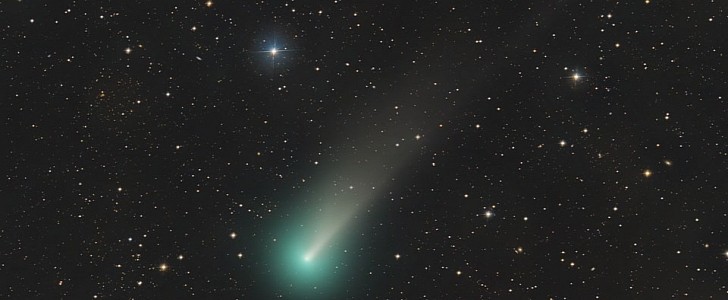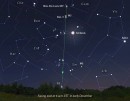We’ve had our share of stunning celestial events this year, including an orange-tinted full moon, the century’s longest partial lunar eclipse, and a beautiful meteor shower. But the thing about this upcoming event is that it’s truly a once-in-a-lifetime occurrence. If you do get to see Comet Leonard, you can count yourself as lucky because it won’t be seen ever again.
A comet that is not only traveling at a very high speed but also promises to be the brightest one this year will become visible to the naked eye pretty close to Christmas. Comet C/2021 A1 Leonard was discovered in January 2021 by astronomer Greg Leonard. According to NASA, this comet is expected to become visible around December 12, when it will be closest to the Sun, as this is the time when comes are brightest.
The falling star is not a threatening one – it will pass Earth at a safe distance, traveling at an impressive speed of 158,084 mph (254,412 kph). Those living in the Northern Hemisphere will be able to spot it first, after which the fireball will be noticeable from the Southern Hemisphere, toward the end of December, beginning of January. Leonard will also pass close to Venus on December 18.
If you use binoculars, you’ll have a better chance of admiring this unique comet, although it can be seen without any help also, depending on the location and the darkness of the sky. If you do, it will be a memorable event – according to EarthSky, we will never admire this comet again because it needs tens of thousands of years to complete an orbit around the Sun.
The most recent photo of Comet Leonard, presented by NASA, is the result of 62 images of the comet and the background stars, which were then combined. The photos were taken through a mid-size telescope in California and show a beautiful green-tinted coma and a long dust tail.
If you do want to catch a glimpse of this year’s brightest comet, make sure to watch the sky on December 12, at 13:54 UTC.
The falling star is not a threatening one – it will pass Earth at a safe distance, traveling at an impressive speed of 158,084 mph (254,412 kph). Those living in the Northern Hemisphere will be able to spot it first, after which the fireball will be noticeable from the Southern Hemisphere, toward the end of December, beginning of January. Leonard will also pass close to Venus on December 18.
If you use binoculars, you’ll have a better chance of admiring this unique comet, although it can be seen without any help also, depending on the location and the darkness of the sky. If you do, it will be a memorable event – according to EarthSky, we will never admire this comet again because it needs tens of thousands of years to complete an orbit around the Sun.
The most recent photo of Comet Leonard, presented by NASA, is the result of 62 images of the comet and the background stars, which were then combined. The photos were taken through a mid-size telescope in California and show a beautiful green-tinted coma and a long dust tail.
If you do want to catch a glimpse of this year’s brightest comet, make sure to watch the sky on December 12, at 13:54 UTC.






